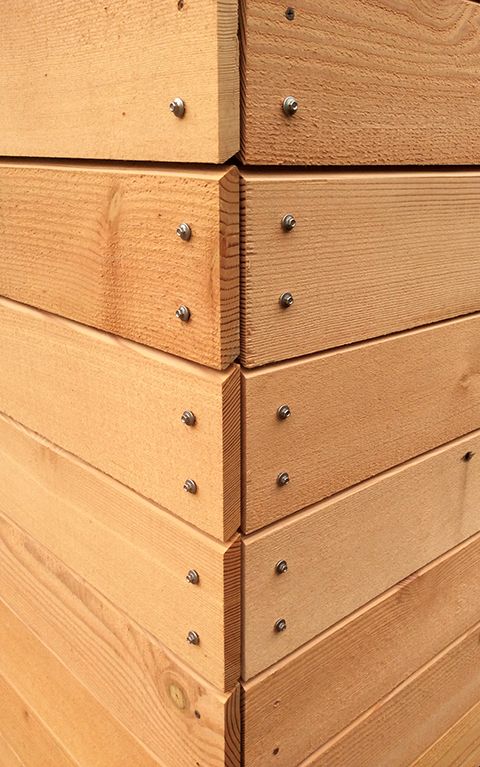Creating a regenerative building in Southern Ontario

The LBC lives up to its name since meeting all its parameters typically entails more than ‘business-as-usual’ solutions and requires a fundamental change in philosophy. The focus is neither on doing a little bit better nor on doing less harm, but rather on embracing the ‘end game’—bridging the gap to a future where buildings are a force of cultural and ecological regeneration.
Each of the seven petals of the challenge inspired design strategies and defined the form, function, and appearance of the YRFSEC.
Place
Removing the boundaries between the building and forest was the central goal of the building and site. By reflecting the site and ecosystem around it, the building becomes part of the natural environment and shares water, energy, and habitat.
Clad in salvaged wood and limestone indigenous to the area, the YRFSEC’s exterior reflects the forest. Vertical green screens provide habitat on the building’s exterior, extending the forest onto the building façade. Learning space spills from inside the building to outdoor classrooms on the wood deck and throughout the surrounding forest. Native plant species and a series of bioswales manage stormwater volumes.
Water
While nature continuously recycles and replenishes clean water supplies, human development too often follows the linear cycle of taking clean water from nature and sending it back full of sewage and contaminants. A living building must be ‘net-positive water,’ meeting 100 per cent of its water needs onsite using captured rainwater or other natural, closed-loop systems.
The YRFSEC captures rainwater that lands on the roof and stores it underground to be reused for flushing toilets and urinals in the building. Two wells supply water filtered and treated to be used in the kitchen, faucets, and showers. All wastewater is treated onsite by a biofiltration device that uses aerobic and anaerobic bacteria to naturally remove pollutants.
Energy
The threshold of regenerative design is to achieve ‘net-positive energy’ using onsite renewable power devices, such as solar panels and windmills, to generate more energy than the building needs. Net-positive buildings and neighbourhoods have no operating GHG footprint they facilitate a new, smart power grid fuelled by clean energy.
On the Hollidge Tract, net-positive energy meant a new design process. Being surrounded by a forest of 30.5-m (100-ft) tall pines is a blessing but makes designing a rooftop photovoltaic (PV) system challenging. Three-dimensional modelling was used to find out exactly where the building could be located so the PV panels had access to sunlight year-round. The 35kW PV system is estimated to generate 38 MWh annually. It is enough to power the building beneath it with some room to spare, but only if it is one of the most efficient buildings in Canada.
Finding the solution meant getting serious about passive solar design and shaping the building to minimize heating and cooling loads through all four seasons. A cantilevered roof projects over the south façade, shading the building from summer sun, but allowing winter sunlight into the building for passive heating. The walls and roof were detailed according to an approach dubbed ‘Passive House-light’ which is a R-60 roof, R-40 walls, and triple-paned, high-performance windows. Thermal imaging and blower door testing were used to find and seal air leaks and thermal bridges in the building envelope.
Clerestory glazing is provided throughout the building to provide natural light and a continuous connection to the outdoors. Operable windows in every space, both at the roof and at occupant level, invite a summer breeze to blow through the building. Floor-to-ceiling glazing is carefully located to give exceptional forest views without compromising on thermal performance. Overall, the building has less than a 30 per cent window-to-wall ratio (WWR).







